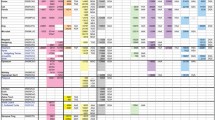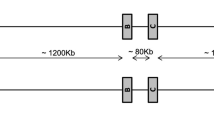Abstract.
There are two tightly linked loci (D and CE) for the human Rh blood group. Their gene products are membrane proteins having 12 transmembrane domains and form a complex with Rh50 glycoprotein on erythrocytes. We constructed phylogenetic networks of human and nonhuman primate Rh genes, and the network patterns suggested the occurrences of gene conversions. We therefore used a modified site-by-site reconstruction method by using two assumed gene trees and detected 9 or 11 converted regions. After eliminating the effect of gene conversions, we estimated numbers of nonsynonymous and synonymous substitutions for each branch of both trees. Whichever gene tree we selected the branch connecting hominoids and Old World monkeys showed significantly higher nonsynonymous than synonymous substitutions, an indication of positive selection. Many other branches also showed higher nonsynonymous than synonymous substitutions; this suggests that the Rh genes have experienced some kind of positive selection.
Similar content being viewed by others
Author information
Authors and Affiliations
Additional information
Received: 16 March 1999 / Accepted: 17 June 1999
Rights and permissions
About this article
Cite this article
Kitano, T., Saitou, N. Evolution of Rh Blood Group Genes Have Experienced Gene Conversions and Positive Selection. J Mol Evol 49, 615–626 (1999). https://doi.org/10.1007/PL00006583
Issue Date:
DOI: https://doi.org/10.1007/PL00006583




